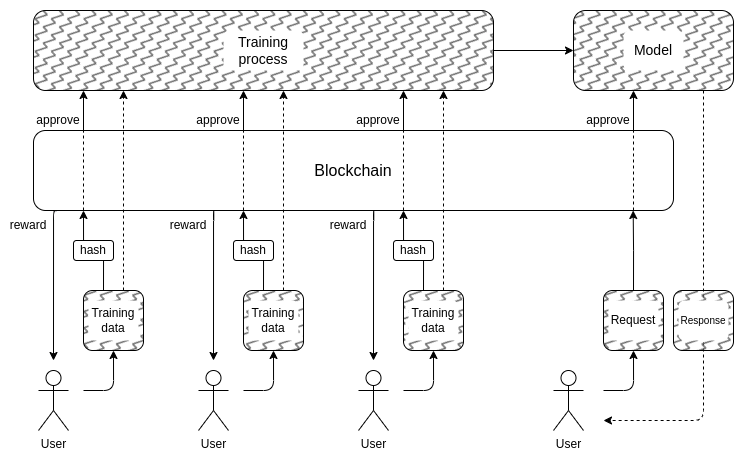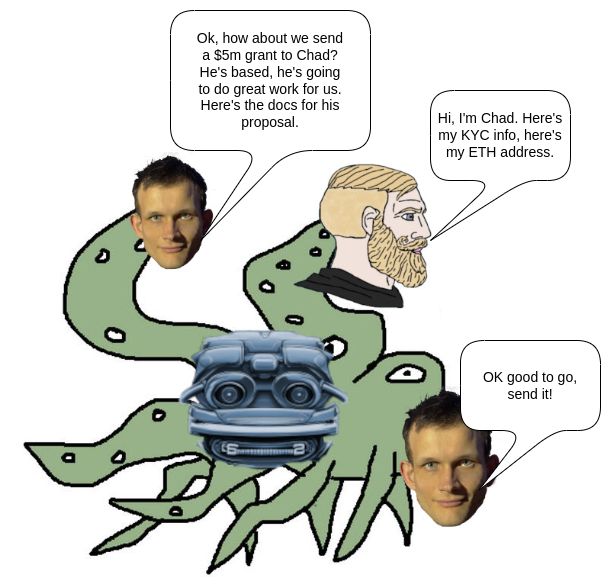Etherium’s dangers
In a most up-to-date post on X platform, Ethereum co-founder Vitalik Buterin shared his thoughts amid a surge in AI-connected tokens, suggesting one capability application of artificial intelligence that he’d desire to sight: AI-assisted formal verification of code and trojan horse finding.
One application of AI that I am inquisitive about is AI-assisted formal verification of code and trojan horse finding.
Appropriate now ethereum’s finest technical risk presumably is bugs in code, and the leisure that can presumably well very a lot swap the sport on that can presumably well well be astounding.
— vitalik.eth (@VitalikButerin) February 19, 2024
Buterin’s post contributes to a broader dialogue he initiated just a few weeks ago, where he outlined four programs cryptocurrency and artificial intelligence might possibly presumably well intersect. These intersections highlight capability exercise cases whereas also acknowledging connected dangers.
Four categories of interplay
In a January post, Buterin digs deeper into that you might possibly presumably well also think of applications of AI in crypto.
In the beginning, the marriage of crypto and AI gave the affect intuitive but lacked concrete applications. Then again, with the maturation of developed AI items love LLMs and the evolution of cryptographic alternatives equivalent to blockchain scaling and zero-files proofs, beforehand untapped synergies are starting to ground.
Buterin items what he thinks often is the four identical outdated items of AI application.
-
AI as Lively Contributors. This class entails AI entities enticing within protocols where incentives are fashioned by human inputs. Examples encompass arbitrage bots in decentralized exchanges, showcasing AI’s prowess in optimizing option-making within financial mechanisms.
-
AI as User Interfacing Instruments. AI-driven interfaces can very a lot increase individual experiences in navigating the crypto panorama. From scam detection to transaction prognosis, AI serves as a highly effective ally in making shuffle individual security and comprehension.
-
AI as Architectural Parts. Integrating AI into blockchain architectures items new challenges, seriously in striking forward transparency and guarding in opposition to adversarial assaults. Hanging a stability between innovation and security is imperative to release this capability.
-
AI as Core Goals. Increasing decentralized AI programs by project of blockchain holds sizable transformative capability. Then again, navigating cryptographic complexities and making shuffle sturdy governance mechanisms are a have to-savor to mitigate dangers and foster frequent adoption.
From arbitrage bots to prediction markets, AI’s feature in optimizing option-making processes within blockchain ecosystems is burgeoning. Then again, making shuffle gentle and clear interactions amid dynamic market stipulations remains a pressing hiss.
AI-driven interfaces promise enhanced individual comprehension and security in opposition to fraudulent activities. But, caution is warranted to mitigate dangers of exploitation and errors, particularly in adversarial contexts.

Increasing decentralized AI programs by project of blockchain holds sizable transformative capability. Then again, navigating cryptographic complexities and making shuffle sturdy governance mechanisms are a have to-savor to mitigate dangers and foster frequent adoption.
While the prospect of decentralized, staunch AI is keen, formidable challenges loom sizable. Thorough experimentation and cautious deployment are imperative to navigate these complexities and uncover 22 situation the plump capability of AI-enabled blockchain alternatives.
In essence, Buterin’s discourse underscores the evolving panorama of crypto-AI intersections, urging stakeholders to tread fastidiously whereas exploring new applications and safeguarding in opposition to emerging dangers.
Deepfake challenges
Buterin fair fair as of late addressed the rising risk of deepfake technology in security contexts. He emphasized the need for adaptive security features in light of the increasing sophistication of deepfakes.
Buterin suggested integrating security questions, pre-agreed code phrases, and a duress key as effective countermeasures in opposition to deepfake manipulation. Furthermore, he suggested imposing transaction delays for irreversible actions to enable for verification and intervention.

By proactively adapting security recommendations to wrestle the evolving nature of deepfake threats, folks and organizations can better safeguard themselves in opposition to fraudulent activities in a digitally unsuitable atmosphere.
AI and techno-optimism
In a November post titled “My techno optimism” Vitalik adressed AI challenges in regard to a identical outdated topic of how our society views the rapid technological style.
Some applied sciences savor the functionality to alleviate the side effects of others. Then again, the arena tends to prioritize definite areas of technological advancement whereas neglecting others. Or no longer it’s needed for humans to actively steer technology in desired instructions, as relying fully on earnings maximization might possibly presumably well no longer naturally lead to these outcomes.

Some diversified bullet parts from Buterin’s essay conceal existencial dangers, social implications to boot to the feature of the deliver in the upcomming challenges.
-
AI as a Transformative Power. AI is no longer appropriate but another technology however a transformative force with vital societal implications, connected to past innovations love the printing press or the Industrial Revolution.
-
AI’s Likely Dominance. AI represents a brand original form of intelligence that can presumably well presumably surpass human intelligence and change into the dominant species on Earth, connected to old evolutionary leaps love multicellular lifestyles surpassing unicellular lifestyles.
-
Existential Threat. The style of AI poses existential dangers, as it might possibly possibly presumably well presumably lead to human extinction if AI decides to turn in opposition to humanity. Instrumental convergence suggests that AI might possibly presumably well also fair prioritize resource consumption and its own security, posing a risk to humanity.
-
Governance Challenges. Governance structures love OpenAI’s are attempting and stability earnings motives with risk administration savor confronted criticism for their lack of transparency and accountability. Centralized energy structures might possibly presumably well also fair exacerbate in preference to mitigate dangers connected to AI style.
-
Democratic Alternatives. In deliver of counting on centralized energy structures, a more democratic formulation to risk administration, equivalent to the d/acc philosophy, might possibly presumably well provide better alternatives for addressing the hazards posed by AI and diversified existential threats.

